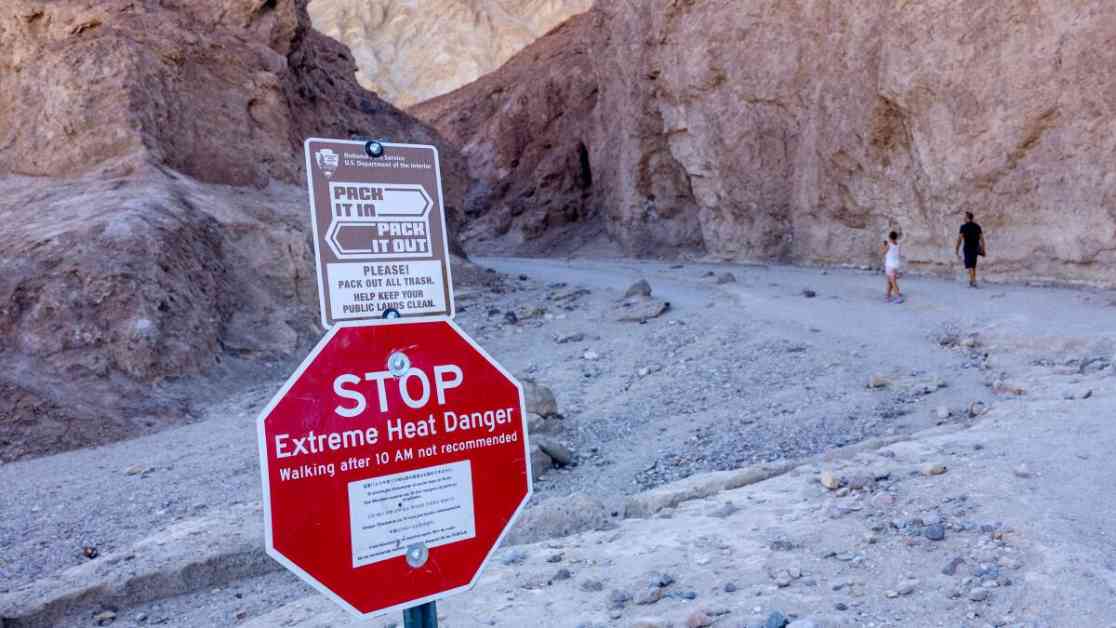California Braces for Surge in Heat-Related Deaths as National Temperatures Soar
As temperatures continue to rise across the United States, a new study published in the medical journal JAMA has shed light on the alarming increase in heat-related mortality. The research, conducted by Jeffrey Howard, an associate professor of public health at the University of Texas at San Antonio, revealed that more than 21,500 people have succumbed to heat-related deaths since 1999, with a significant uptick in fatalities observed in recent years.
Growing Trend of Heat-Related Deaths in the U.S.
The study highlighted a concerning trend in heat-related mortality, particularly from 2016 to 2023, with a sharp increase in deaths attributed to exposure to excessive natural heat, effects of heat and light, or environmental hyperthermia of newborns. While previous research had suggested a slight downward trend in heat-related deaths from 1975 to 2018, the latest findings have pointed to a clear escalation in fatalities, signaling a pressing need for further investigation and intervention.
Factors Contributing to Undercounting of Heat-Related Deaths
Despite the rise in heat-related deaths, experts warn that the actual numbers may be significantly higher due to chronic undercounting. Heat-related fatalities are often overlooked on death certificates, as they can manifest as complications of underlying health conditions such as pulmonary disease. Additionally, improvements in tracking and reporting practices by health departments may have contributed to the recent surge in reported heat-related deaths, further complicating the accuracy of data.
The Looming Threat of Climate Change
The study underscored the deadly impact of heat as the most lethal climate hazard in the United States, surpassing hurricanes, floods, and tornadoes in mortality rates. With heat waves becoming more frequent and intense due to climate change, the urgent need for proactive measures to address rising temperatures and mitigate heat-related deaths is paramount.
California at the Forefront of Heat-Related Mortality
California, in particular, has been hit hard by heat-related deaths, with a significant number of fatalities recorded in recent years. Last year, Phoenix experienced a staggering 31 consecutive days of temperatures exceeding 110 degrees, leading to a record 645 heat-related deaths in 2023. The state’s extreme temperatures and prolonged heat waves have prompted local authorities to consider investing in expanded access to hydration centers and public cooling facilities to combat the rising threat of heat-related mortality.
Challenges in Addressing Heat-Related Risks
While cooling centers and public health initiatives play a crucial role in mitigating heat-related risks, challenges remain in ensuring accessibility and effectiveness during heat waves. Many cooling centers often remain underutilized due to logistical constraints, highlighting the need for community-oriented resilience centers that offer comprehensive support beyond basic amenities. Neighborhood-based interventions, such as regular check-ins on vulnerable individuals, can also play a vital role in safeguarding communities against the dangers of extreme heat.
California’s Response to Escalating Heat Waves
In response to the escalating threat of heat waves, California has implemented a series of initiatives to enhance resilience and preparedness for soaring temperatures. Governor Gavin Newsom unveiled the state’s extreme heat action plan in 2022, which includes public awareness campaigns, infrastructure upgrades, and nature-based solutions such as tree planting to mitigate the impact of heat waves. The rollout of CalHeatScore, a tool that categorizes and ranks heat waves similar to hurricanes, aims to provide timely information and resources to communities at risk.
The Need for Comprehensive Heat Mitigation Strategies
Despite ongoing efforts to address heat-related risks, experts emphasize the importance of comprehensive strategies to combat the growing threat of extreme heat. Physicians, media outlets, and community organizations play a crucial role in raising awareness about the risks of heat-related mortality and advocating for preventative measures. Collaborative efforts at the local, state, and national levels are essential to ensure the effective implementation of heat mitigation strategies and protect vulnerable populations from the impacts of rising temperatures.
The Urgency of Climate Action
As temperatures continue to rise and heat-related deaths escalate, urgent action is needed to address the underlying causes of climate change and mitigate its devastating effects. California’s experience with record-breaking temperatures serves as a stark reminder of the urgent need for climate action to protect public health and safety. By prioritizing resilience, preparedness, and community engagement, we can work towards a sustainable future where the impacts of extreme heat are minimized, and lives are safeguarded against the growing threat of climate change.



























